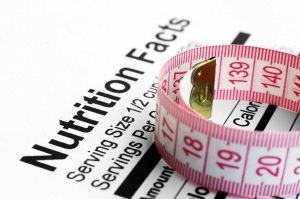
Nutritional Facts
Nutritional information is displayed on packaged foods to let the consumer know about the amount of proteins, carbohydrates, sugar, fats, vitamins, minerals and calories contained in it. The nutrient content is displayed either as a panel or in grid form on the side or back of the packaging. This enables consumers to read the nutrient values easily and make informed choices depending on their nutrient and health needs.
Growing children and sports persons have different needs as compared to other consumers who do not require so many proteins or a high calorie diet. Obese people and those who suffer from diabetes or those who have a high lipid profile or high blood pressure need to be conscious of what nutrient or sugar levels they are consuming. A nutritional information label helps such consumers to make appropriate and safe food choices. Nutritional information allows consumers to compare the nutritional values of two similar foods of different brands and helps them choose the one that is more suitable, keeping their health issues in mind.
Nutritional value often acts like a marketing tool that attracts consumers. This is particularly relevant for health supplements. The fact that manufacturers have to place nutritional information on labels helps them make quality products since the product carries a relevant nutrient profile label.
The values for nutritional elements printed on labels should be according to the prescribed dietary limits in the food items. The nutritional limits in a food product must match with what has been specified on the label. Manufacturers must ensure that the nutritional values specified on labels are in accordance with regulatory guidelines. This could prevent the product from being considered ‘misbranded’. Food business operators must be careful as misbranding is considered as a punishable offence under Food Safety and Standards Act, 2006.
The Indian food law, Food Safety and Standards (Packaging and Labeling) Regulations 2011, as notified by the FSSAI, requires that nutritional value or Nutritional Information or nutritional facts be mentioned per 100 gm or 100ml or per serving of the product. It should be displayed as mentioned below.
(i) Energy value in kcal;
(ii) The amounts of protein, carbohydrate (quantity of sugar), and fat in gram (g) or ml;
(iii) If a special claim is made regarding nutritional value or health benefit then the amount of other nutrients according to which the claim has been made should also be mentioned on the label.
If a claim is made about fatty acids, cholesterol, saturated fatty acids, monounsaturated fatty acids and polyunsaturated then in addition to the other requirements mentioned above
fatty acids claims should be mentioned in gram (g)
cholesterol in milligram (mg)
amount of trans fatty acid in gram (g)
Labels can display ‘free from trans fat’, if the food product contains less than 0.2 gram per serving of trans fat. If saturated fat is less than 0.1/100gm or 100ml of food it can be claimed as ‘free from saturated fat’. Some food articles like wheat, rice, pickles etc. and the single ingredient foods are exempted from mentioning nutritional values. FBOs should always do a constant check on the nutritional ingredients in reference to the recommended values which are safe for human consumption.
It is recommended that nutritional facts be mentioned in table format (as shown below) so consumers can read nutritional values in just one glance.
Nutritional facts per 100 gm
Energy k.cal
Protein g
Carbohydrate g
Sugar g
Fats g
Saturated Fatty Acids g
Monounsaturated Fatty Acid g
Polyunsaturated Fatty Acids g
Cholesterol mg
No comments:
Post a Comment